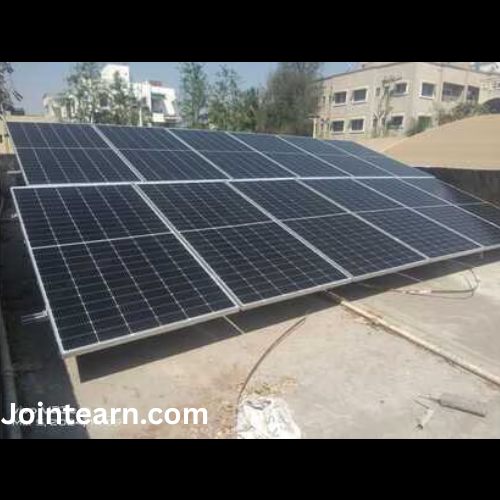Guwahati: Union Minister for Communications and Development of the North Eastern Region (DoNER), Jyotiraditya Scindia, on Sunday highlighted the transformative policies implemented by the Central government over the past 11 years, asserting that India’s northeast is poised to become a major engine of the country’s growth. Speaking at the Indian Institute of Technology (IIT), Guwahati, during the inauguration of the North Eastern Science & Technology (NEST) cluster, Scindia underscored the region’s strategic and developmental significance in shaping India’s future.
“The northeast region will be the engine of India’s growth. Today, the government at the Centre stands with you, hand in hand, to lead that development push forward,” Scindia said, emphasizing the government’s commitment to unleashing the potential of the region. The NEST cluster, he noted, is a significant step in building a robust science and technology ecosystem, which is expected to drive innovation-led development and create opportunities for the youth and industries in the eight northeastern states.
According to Scindia, Prime Minister Narendra Modi has redefined the narrative around the northeast. Historically considered landlocked and peripheral, the region is now being positioned as “land-linked”, serving as a strategic bridge to Southeast Asia. “For 65 years, the area had been known as landlocked. But the PM has changed that paradigm from landlocked to land-linked. The northeast can become our bridge to the Southeast Asian region,” he said, stressing the region’s potential as a gateway for trade, investment, and cultural exchanges with neighboring countries.
Scindia further elaborated on the government’s vision for the northeast, highlighting Prime Minister Modi’s designation of the eight northeastern states, including Sikkim, as “Asta Lakshmi” – the eight manifestations of Goddess Lakshmi. This symbolic nomenclature, Scindia explained, reflects the vibrancy, diversity, and latent capability of the region, which the government is determined to harness through focused policies and infrastructure investments.
The minister also discussed the implementation of the Act East, Act Fast, and Act First initiatives, which have played a pivotal role in unleashing the economic and strategic potential of the northeast. These initiatives, he noted, have catalyzed significant improvements in connectivity, transportation, and infrastructure development. “In the past 11 years, the northeast has undergone a complete metamorphosis in transportation,” Scindia said, citing key statistics that demonstrate the government’s commitment to modernization.
He pointed out that the region had only 10,000 km of national highways over 65 years, but the past decade has seen the addition of 6,500 km of new national highways, significantly enhancing inter-state and cross-border connectivity. Similarly, the region’s air connectivity has expanded from nine airports to seventeen, facilitating faster movement of goods and people and strengthening the northeast’s integration with the rest of India.
“The northeast is no longer the periphery of India. You are the pivot for our country,” Scindia said, highlighting the strategic and economic centrality of the region in India’s broader development trajectory. He emphasized that the government’s focus on infrastructure, transportation, and digital connectivity is not just aimed at improving quality of life but also at making the region an economic and innovation hub that can drive national growth.
In addition to transport and connectivity, Scindia highlighted the importance of science and technology in driving the northeast’s development. The NEST cluster at IIT Guwahati, he explained, is designed to promote research, innovation, and entrepreneurship, enabling students and local innovators to contribute to India’s technological and industrial progress. By fostering a culture of research and innovation, the government aims to create an ecosystem where talent in the northeast can compete on a national and global level.
Scindia also emphasized the government’s commitment to leveraging the northeast’s geographical advantage and natural resources. By enhancing connectivity and infrastructure, the region can play a crucial role in trade, tourism, and cultural exchange with Southeast Asian countries, complementing India’s Act East Policy. “The northeast is our gateway to ASEAN. We must capitalize on this potential to drive economic growth, create jobs, and enhance regional cooperation,” he said.
During his address, Scindia also touched upon the government’s broader development strategy for the northeast. He spoke about improving healthcare, education, and industrial growth, ensuring that the benefits of development reach remote and tribal areas. The initiatives are designed to create a self-reliant and resilient regional economy, capable of generating employment and sustaining long-term growth.
The minister’s remarks also highlighted the government’s focus on inclusive development. By investing in infrastructure, technology, and human capital, the administration seeks to empower local communities and integrate the northeast fully into India’s growth story. This approach, he noted, balances economic development with the preservation of the region’s unique cultural and ecological heritage.
Scindia also pointed out that the northeast’s strategic location makes it a critical component of India’s national security and foreign policy. By strengthening connectivity and economic resilience, the region can serve as a stabilizing force in the eastern borders while supporting India’s broader engagement with Southeast Asia and beyond.
The Union minister’s four-day tour of the northeast underscores the government’s hands-on approach to monitoring and accelerating development in the region. By directly engaging with local communities, students, and businesses, Scindia aims to ensure that policy implementation is both effective and responsive to local needs.
Scindia concluded his address by reaffirming the government’s commitment to the northeast as a central pillar of India’s growth agenda. “The northeast is no longer a distant periphery; it is a dynamic engine of growth, innovation, and opportunity. We are committed to ensuring that this region realizes its full potential and contributes decisively to India’s journey toward development and global competitiveness,” he said.
With the inauguration of the NEST cluster, the government has taken a concrete step toward creating an innovation-driven ecosystem in the northeast. The initiative is expected to spur research collaborations, start-up incubation, and technology transfer, positioning the region as a hub for scientific and technological excellence.
By combining strategic location, infrastructure development, and investment in science and technology, the government aims to make the northeast a cornerstone of India’s economic growth. With expanded highways, new airports, enhanced research facilities, and a vision for regional integration, the northeast is being transformed from a historically isolated region into a dynamic center of opportunity and progress.
In summary, Jyotiraditya Scindia’s address at IIT Guwahati highlights a multi-dimensional strategy for the northeast, focusing on connectivity, innovation, economic growth, and regional integration. Through targeted policies and substantial investments, the government aims to ensure that the northeast not only contributes to India’s national development but also becomes a model of inclusive, sustainable, and innovation-led growth, bridging the gap between India and its eastern neighbors.
The message from the Union minister is clear: the northeast is no longer on the margins of India’s development story. Instead, it is positioned at the center, ready to act as a strategic, economic, and technological engine driving the country’s growth in the 21st century.


Leave a Reply